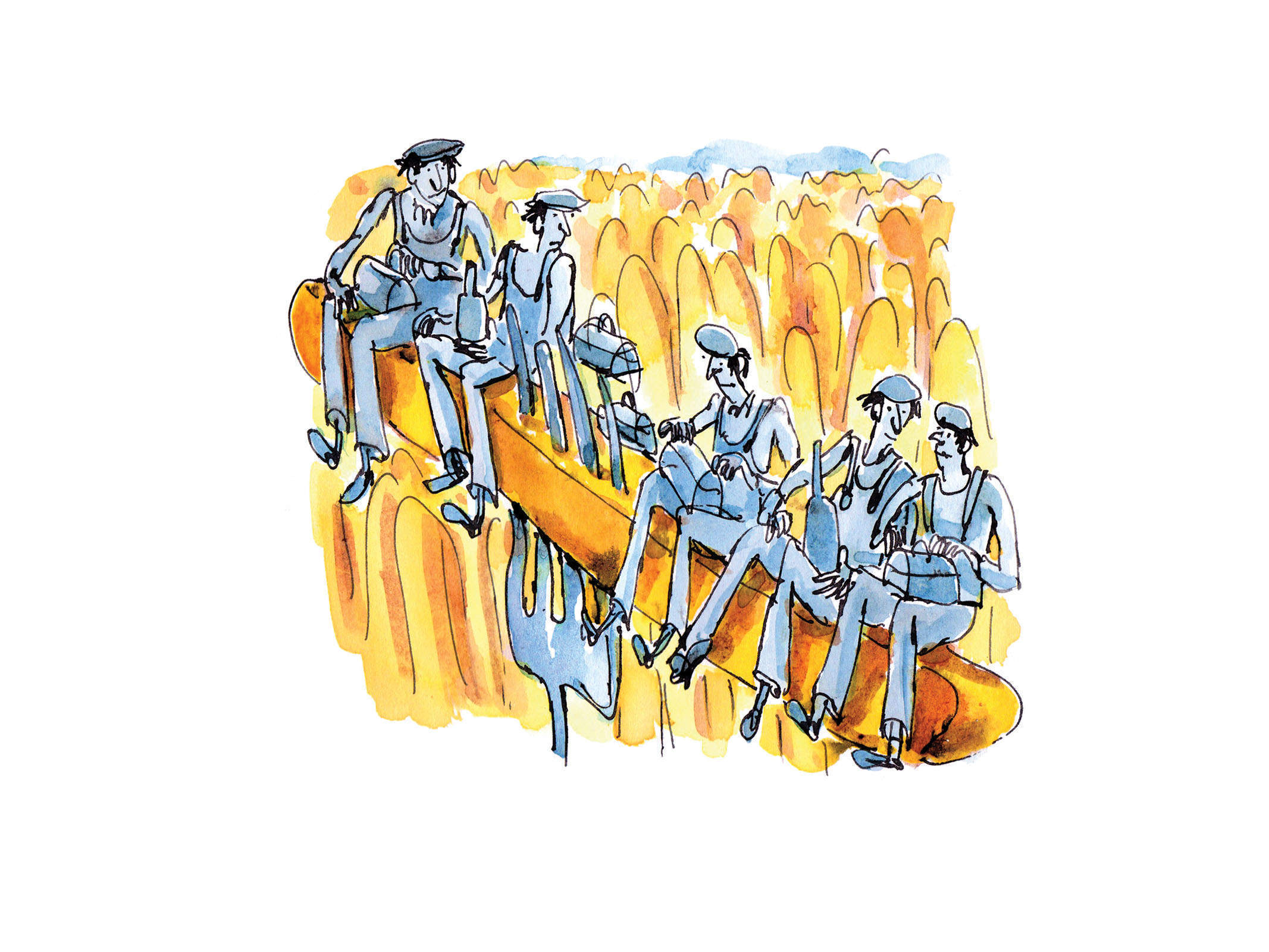
Obtain a litre and a half of vegetable oil – sunflower for preference. Pour oil into heavy saucepan and commence heating. Peel and slice potatoes into appropriate shapes; place shapes in frying basket; lower basket into boiling oil. Wait. In due course remove frying basket; tip cooked chips on to kitchen towelling or newspaper to remove grease; add salt and malt vinegar to taste. The end.
I return to the subject of chips, and gladly. Given that the chip is the veritable substratum of British cuisine, the sprung floor upon which all our other dishes promenade and pirouette, it seems only fitting that this column – dedicated as it is to the grittiest of gastronomy – should consider them on a regular basis. Above is my own “recipe” for chips, which is one of the things I cook at home fairly frequently – so often, indeed, that they’ve acquired their own sobriquet: “Dad’s Chips”. We live a hop, a skip and a waddle away from Rohan Palmer’s chip chop (see Real Meals passim), so there’s no requirement for home-cooking, yet while his chips are absolutely fine the pleasing consensus is that Dad’s Chips are just a little bit better. Indeed, such claims as patriarchy have in this household are wholly embodied in these starchy little phalluses – all else is healthy, low-fat gynarchy.
As it is to Self Family, so it is to the wider world. “Dad’s Chips” are a throwback to a simpler, happier world; one in which men wore hobnailed boots and went down t’pit or t’mill while the womenfolk stayed at home beating carpets and blacking grates. In the monstrous realm of mediatised commoditisation that is the reality of British restaurant eating, the chip has come to play a crucial role: as we’ve just had Easter, perhaps the best way of conceptualising this is to imagine two giant chips, one implanted in the earth of Golgotha, the other forming a crossbar crudely affixed to the first with congealed tomato ketchup. On this chipifix is crucified the pukkah form of Our Saviour, Jamie Oliver, who died for our dietary sins.
Except He hasn’t really died – He’s been resurrected, in common with other celebrity burger-flippers; and the chip, rather than being reviled as an evil repository of unsaturated, satanic fats, has been taken up as the symbol of sacred edibleness. I had been aware (who couldn’t be?) of the “new chips”: the humble potato repurposed for gastronomy in the form of shoestring fries, thick-cut chips, rosemary chips, sweet potato chips, crinkle-cut fries, etc; yet it wasn’t until I had supper at the Everyman Bistro in Liverpool in October last year that full horror of the “new chips” impinged.
I was supping with a group of inoffensive academics from the University of Liverpool after an event we’d done in the crypt of the nearby cathedral (the one that looks like a cruet, not the upended-yoghurt-pot one), and in keeping with the Everyman Theatre’s tradition of radical socialist experimentation the Bistro had a vaguely utilitarian feel: long, wooden-topped tables, low spotlights and open kitchen area. The food, when eventually it arrived, was served either on wooden platters or in large and chunky crockery – deep bowls, or plates with extra-wide rims.
These deceptive vessels deserve a column of their own, for their disproportion is an unconsciously cultivated effect, rendering the food they contain out-of-scale and slightly unreal. In our bistros and fancy burger joints, our brasseries and diners, we are no longer presented with food itself, but only with three-dimensional images of food.
Such is the influence of television cookery programmes and online recipes on our food culture, that the epistemic value of a mere potato is far lower than that of artfully photographed outsize chips. At the Everyman Bistro, observing the bowl that had been deposited in front of me, I struck the board and cried, “No more!” Then I picked up one of the chips and waggled it in the faces of my fellow diners. “This isn’t a chip,” I admonished them: “it is a pseudopod of the Spectacle, and by putting it in your mouth you are initiating a form of phagocytosis, in which you yourself are the foreign body that’s to be absorbed.”
Needless to say, they looked pretty fazed; but I soon put them further into their misery. The chip, I explained – which was fully six inches long and a half-inch through – had been cut monstrously large in order to enhance its aura of workmanlike authenticity, then placed in a big bowl so as to hide this trompe l’oeil. Yet it is only at the point at which hand lifts chip to mouth that the diner feels himself to be hefting the gustatory equivalent of a pit prop. And so, as he bites into it, he indulges in a fantasy of full employment, universal social housing and increasing equality of wealth.
Of course, once the chips are all gone this happy, socialistic reverie also dispels: all that is left are bowls smeared bloodily red and a fat bill. Big and fancy chips are like museums of industrial heritage – they fool us into forgetting for a short while the automated world of hyper-consumption we truly inhabit. Since last October I’ve been keeping a list of fancy chip prices. The most expensive portion to date has been £4.95 at a burger joint just off Carnaby Street, a 2,000 per cent mark-up on Dad’s Chips.
Ah well, you pays your money and you chooses your patriarchy.
Next week: Madness of Crowds



